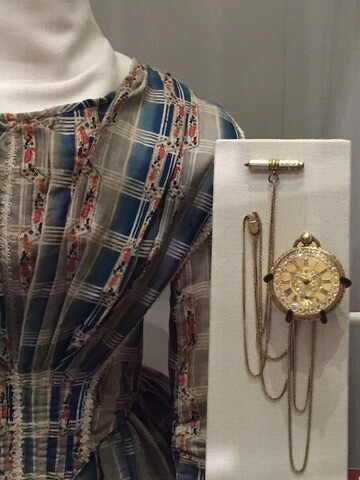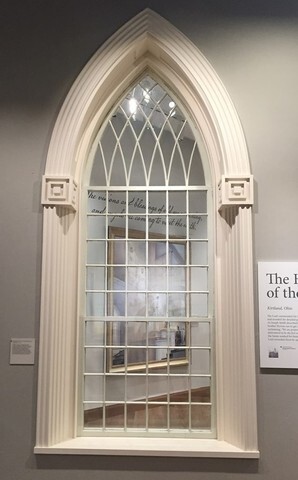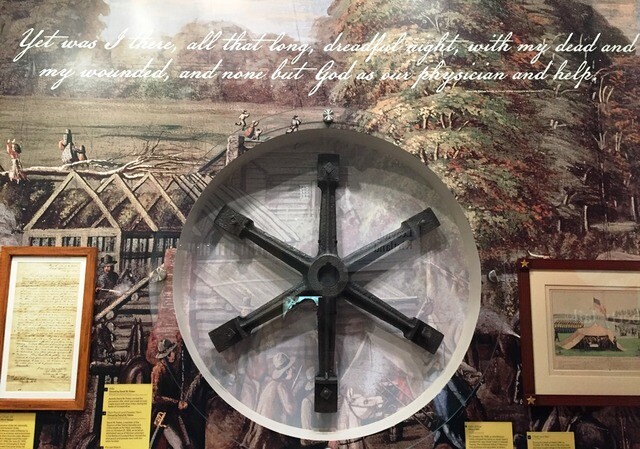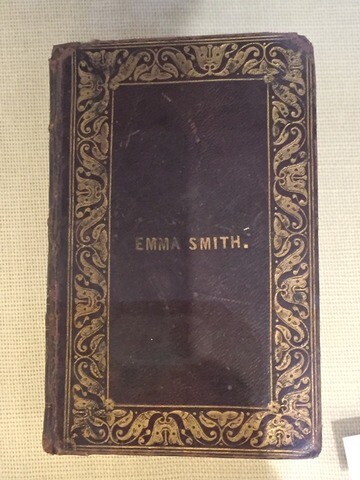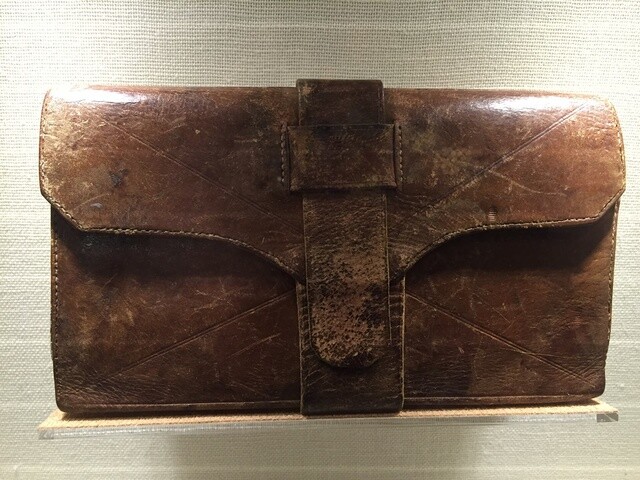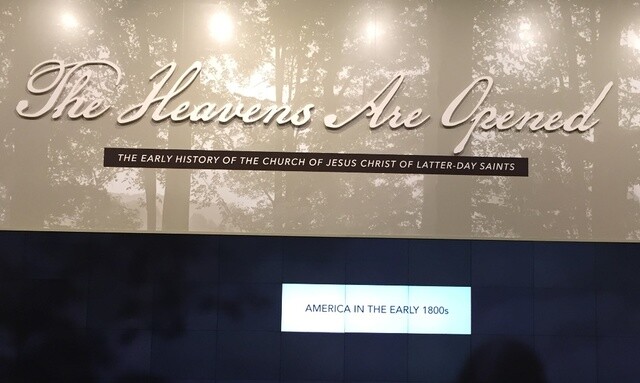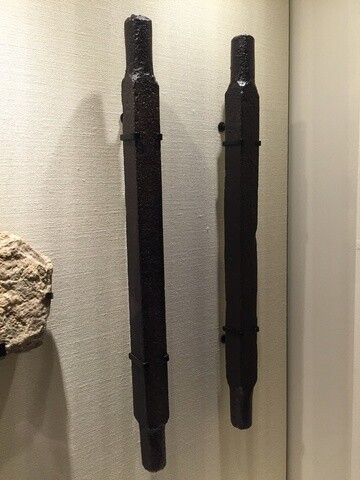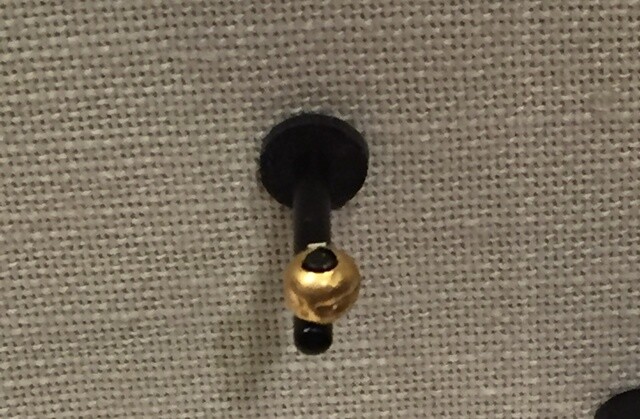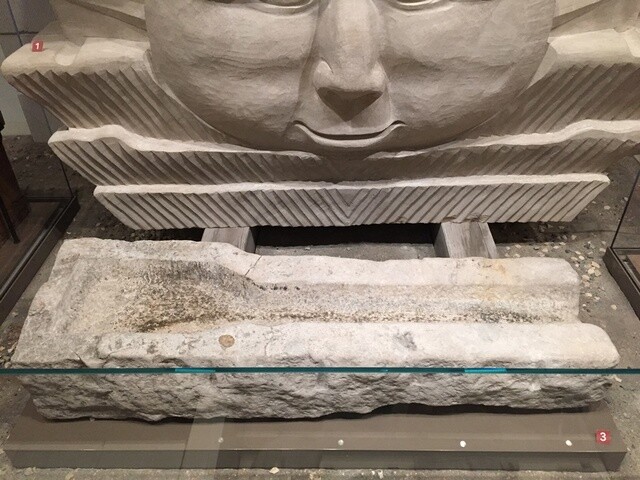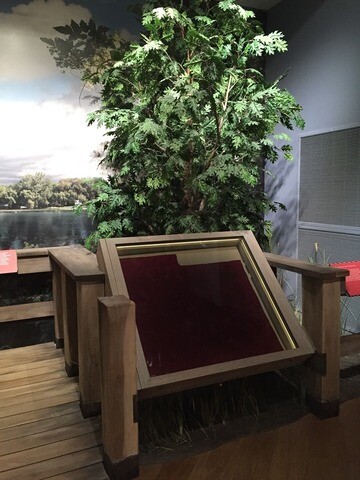As general conference approaches, many visitors will be on Temple Square for the first time. But whether you’ve been a dozen times before or are seeing Salt Lake for the first time, you’ll definitely want to stop by the Church History Museum just off Temple Square and check out the incredible new exhibit that opened last fall. Here are just a few items to keep your eyes open for during your visit.
Click herefor additional information, including hours and location or herefor an interactive map of The Heavens Are Opened exhibit.
Lucy Mack Smith’s Gold Bead
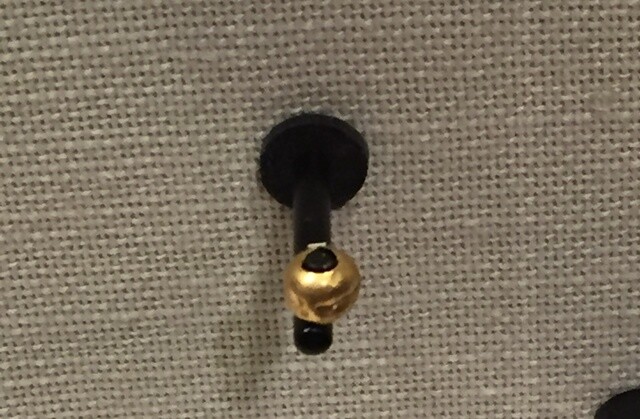
This small treasure might not seem like much, but the story behind it symbolizes years of trial and testimony for Lucy and Joseph Smith Sr.
When Joseph Smith Jr.’s parents had a debt they could not pay, the debt collector gave them a choice: burn all the copies of the Book of Mormon in their house, or go to jail. They refused, and though Lucy offered her necklace of gold beads to cover the cost, nothing would satisfy the man except the destruction of the scriptures or Joseph Sr.’s imprisonment. Ultimately, Joseph Smith Sr. spent a month in prison, working as a cooper to pay off his debt, and helping convert two fellow inmates to the gospel.
One of the bead's from this very necklace is located in the Religious Awakenings section of the exhibit. Click here for the full story on history.lds.org.
Fragments of the Nauvoo Temple Baptismal Font
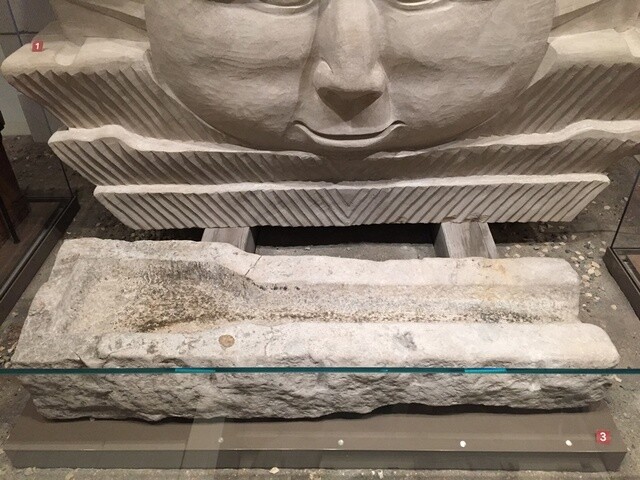
When the Saints left their persecutors behind, they also had to leave their beloved temple. Not many years after, the desecrated building was burned almost to the ground and was soon even more completely destroyed by a tornado. When plans were made to rebuild the temple, excavation workers found the original baptismal font’s drain. Fragments from the font, including bricks from the floor and part of an ox muzzle, are now on display next to a replica of an original Nauvoo Temple sunstone.
Find these fragments in The Nauvoo Temple section of the exhibit.
Bars from Liberty Jail
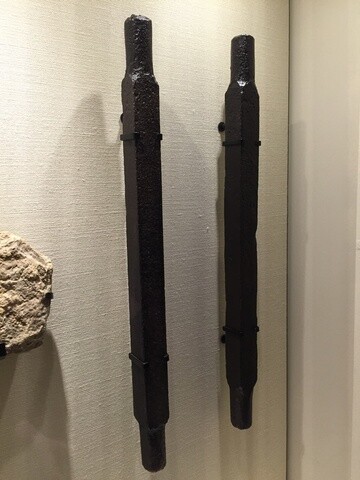
The miserable dungeon of Liberty jail housed Joseph Smith, his brother Hyrum, Sidney Rigdon, and several other Latter-day Saint leaders for four months in 1838. It was while in this confined space that the familiar plea in Doctrine and Covenants section 121 was penned: "O God, where art thou? And where is the pavilion that covereth thy hiding place?"
God's answer, given in that small room, still brings comfort to members today: "My son, peace be unto thy soul; thine adversity and thine afflictions shall be but a small moment; And then, if thou endure it well, God shall exalt thee on high; thou shalt triumph over all thy foes."
Find these bars in the Liberty Jail section of the museum, next to a replica of the low-ceilinged room Joseph and the other brethren were imprisoned in.
Hyrum Smith’s Sunglasses
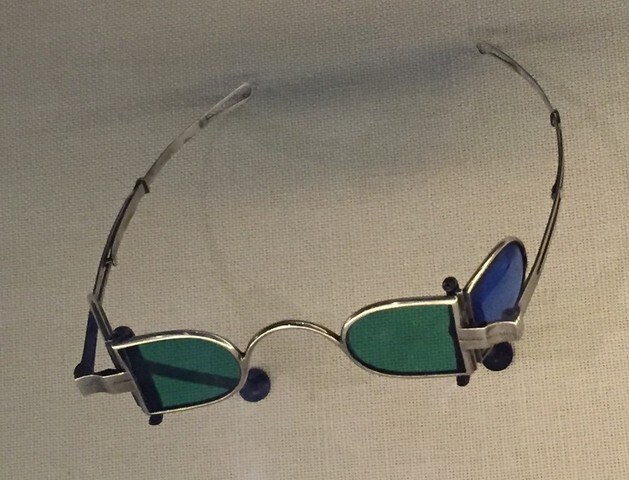
Hyrum’s personal pair of prescription sunglasses corrected his farsightedness and could collapse to fit a small case. The glasses are subtly displayed next to the clothes he was wearing the day of the martyrdom and were part of a collection of artifacts formerly owned by Elder Eldred Smith, a direct descendant of Hyrum. A similar pair, owned and used by Brigham Young, are on display in another part of the museum.
Other artifacts from Eldred Smith’s collection that are now on display include the clothes Hyrum was wearing the day he was killed as well as the watch he carried, which was shattered by a bullet.
Find these artifacts in The Martyrdom section of the museum, along with the death masks of Hyrum and Joseph, Stephen Markham’s cane, and John Taylor’s pocket watch. Read more about these artifacts onhistory.lds.org.
Eliza R. Snow's Pocket Watch
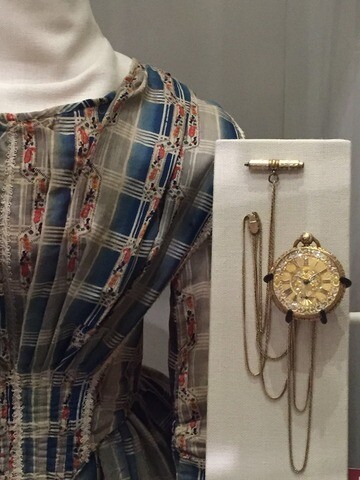
While Eliza R. Snow was acting as secretary of the Relief Society, Joseph Smith gave her this watch to help her with her responsibility of beginning and ending meetings on time. She later gave the watch to Joseph F. Smith. Eliza R. Snow is perhaps best known for her poems and some of her words are still sung today in hymns like "O My Father."
See this beautiful pocket watch in the Nauvoo section of the museum, along with other unique Relief Society artifacts.
Joseph Smith’s Handkerchief, Owned by Wilford Woodruff
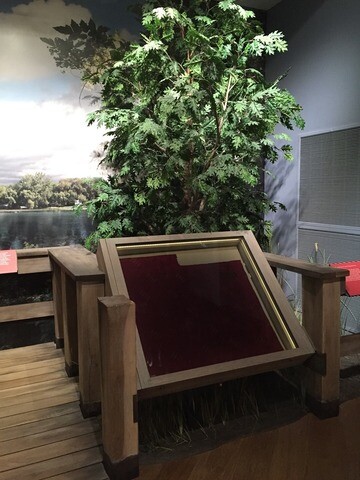
An unexpectedly large piece of red fabric in a frame, the handkerchief on display at the Church History Museum held great significance for President Wilford Woodruff. It was given to him by the Prophet during the early days of Nauvoo, when the city was just a swamp and malaria ran rampant. When a man, who was not a member of the new church, asked for Joseph to come bless his dying 3-month-old twins, Joseph was too ill and instead sent Wilford with his red silk handkerchief. He told Wilford:
“After you lay hands upon them, wipe their faces with it, and they shall be healed; and as long as you will keep that handkerchief, it shall ever remain as a league between you and me.”
Wilford kept the handkerchief as a reminder of this experience. The missing section was likely torn off by someone looking for a souvenir of the Prophet Joseph.
Watch for this treasure in the Nauvoo section of the exhibit. Read more about this experience and Joseph’s compassion towards the sick on history.lds.org.
Martin Harris’s Wallet
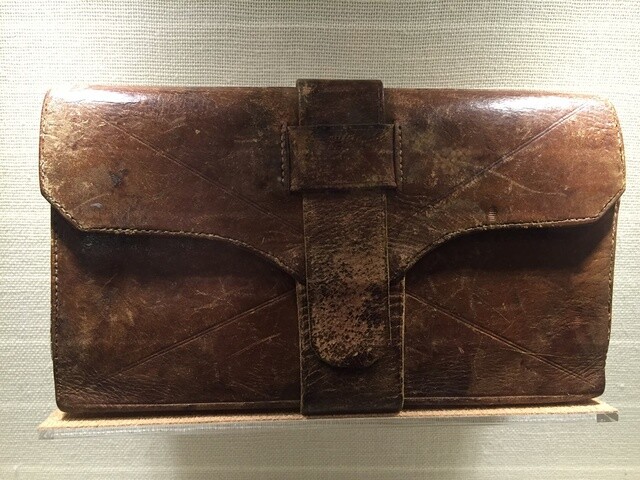
Martin Harris is a name most members of the Church recognize from early LDS history. Not only for his involvement with the 116 lost pages but just as significantly for his substantial monetary donation towards printing the Book of Mormon. Mortgaging his farm for the equivalent of $67,000 today, Harris family history claims that he took that money to the printer in this exact wallet.
Martin later sold 151 acres of land to pay off the debt. And though later events led to temporary separation from the Church, he never denied his testimony of the book of scripture he helped translate and print.
This item is found in the A New Scripture section of the exhibit. Click here for the full story on history.lds.org.
Kirtland Temple Window
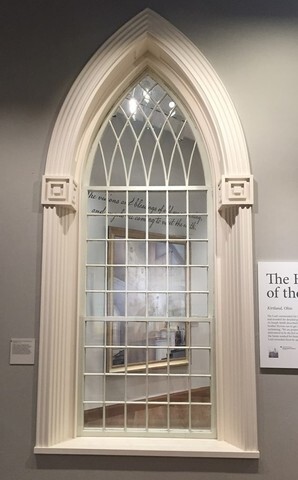
As the first Latter-day temple, the early Latter-day Saints poured their resources and efforts into building a beautiful edifice to their God in Kirtland. The resulting Kirtland Temple still stands today, but one of its hand-crafted windows now has a home in the Church History Museum. Though the frame and sill are replicas, the original glass and sash are displayed. The window was built by Brigham Young and his brother Joseph Young and allowed light to enter the first-floor assembly room.
Don’t miss this delicate artifact in the Kirtland, Ohio section of the exhibit. Click here for more information about the construction of the Kirtland Temple on history.lds.org.
Hawn’s Mill Face Wheel
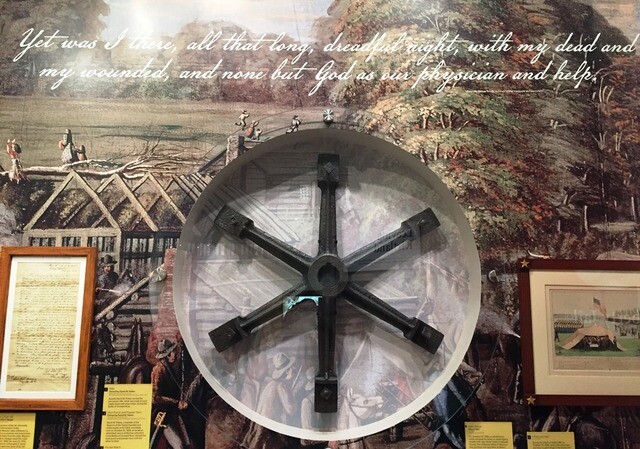
The tragic location of the massacre of at least 17 Saints, Hawn’s Mill is a dark memory in Mormon history. The cast-iron “face wheel” on display in the museum today is a reminder of the heartbreaking violence between an armed Missouri militia and 15-20 pioneer families shortly after Governor Boggs’s infamous Extermination Order was given. This piece of machinery was part of Jacob Hawn’s gristmill. Though the mill was destroyed in 1845, a fisherman found the face wheel buried in a nearby creek bed in 1981.
Find this artifact in the Missouri section of the museum. For more on this story and some of the miracles that later came from this event, check out history.lds.org.
A Collection of Hymns Owned by Emma Smith
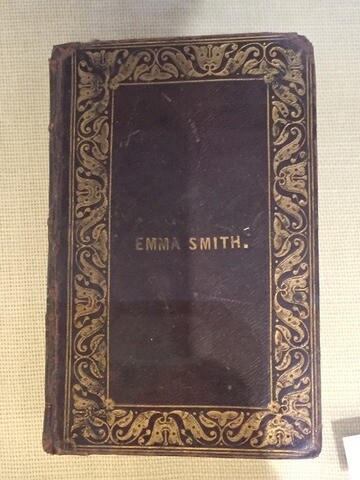
Made of paper and sheepskin, this fourth edition book was specifically published for the Latter-day Saints in Europe in the 1840s. The copy on display at the museum was owned by Joseph Smith's wife, Emma.
Find this item in The Nauvoo Temple section of the Church History Museum.
All photos courtesy of Christiana Pinborough.
